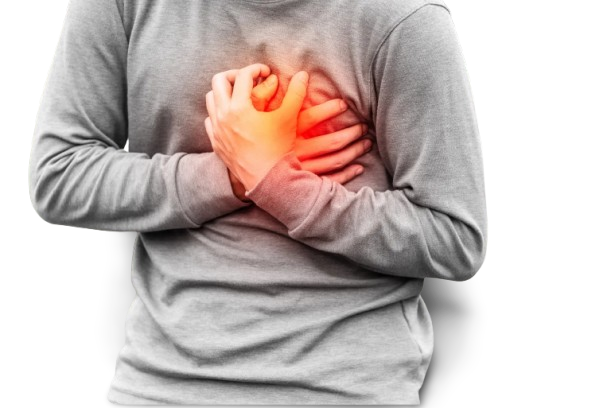Wednesday, December 31, 2014
The Benefits of Walking
Benefits of walking
• Improves efficiency of your heart and lungs
• Burns body fat
• Raises your metabolism so you are burning
calories faster, even while you rest
• Helps control your appetite
• Increases your energy
• Helps relieve stress
• Slows aging
• Lowers high blood pressure
• Helps control and prevent diabetes
• Reduces risk of some forms of cancer
including colorectal, prostrate, and breast
• Promotes intestinal regularity
• Helps promote restful sleep
• Strengthens your bones and reduces bone density
loss in older women
• Reduces stiffness in your joints due to
inactivity or arthritis
• Relieves most cases of chronic backache
• Improves flexibility
• Improves posture
• Promotes healthier skin due to increased
circulation
• Improves mental alertness and memory
• Spurs intellectual creativity and problem
solving
• Elevates mood
• Helps prevent and/or reduce depression
• Improves your self-esteem
• Helps control addictions to nicotine,
alcohol, caffeine, and other drugs
Walking is much preferable to running or
jogging because it creates less stress on your joints, including hips, knees,
and ankles. Remember to properly warm up
*Research has shown that the benefits of
walking and moderate physical activity for at least 30 minutes a day can help
you:
ü
Reduce the risk of coronary heart disease
ü
Improve blood pressure and blood sugar levels
ü
Improve blood lipid profile
ü
Maintain body weight and lower the risk of obesity
ü
Enhance mental well being
ü
Reduce the risk of osteoporosis
ü
Reduce the risk of breast and colon cancer
ü
Reduce the risk of non-insulin dependent (type 2)
diabetes
The impact of walking on mental health:
·
reduce physical symptoms of anxiety associated with
minor stress.
·
increase self‐reported energy levels when older adults set their own
pace.
·
improve sleep quality.
·
elevate affective response (e.g. pleasure), resulting
in increased psychological well‐being for individuals
·
with type 2 diabetes.
·
be associated with better cognitive performance at
school.
·
improve the cognitive functioning of older adults
(compared to stretching and toning).
·
improve cognitive performance and reduce cognitive
decline among older people.
·
increase the size of the hippocampus and prefrontal
cortex, potentially beneficial for memory.
ý
In 2011, three review studies examining the
recommended number of daily steps for adults, children and special populations,
in order to determine ‘how many steps per day are enough?, The researchers also
identified the minimum number of moderate to vigorous steps recommended for
male and females at a variety of age thresholds. These findings are summarized
in figure
Ref:
- Collaborating for Health
- Iowa State University of Science and
Technology
- American Heart Association
Sunday, December 14, 2014
What is the cause of elbow pain ?
Pain in the left arm can be due to many causes, ranging from
a pulled muscle to a massive heart attack. While it is not always possible to
determine whether left arm pain is due to an insignificant cause or something
potentially serious, several features can help distinguish the difference.
In another direction; some people experience pain in
left arm and immediately think it might be related to a heart problem. Although
that is one possibility, there are other factors that can cause arm pain,
whether it is unilateral (affects only one arm) or bilateral (affects both
arms).
Pain in left arm can also be an acute or a chronic
condition. Sudden or short lasting arm pain is said to be acute while one that
persists for over three months is considered to be chronic. In some cases, pain
just comes and goes, while in some people, pain may become progressive and
debilitating.
Pain in left arm may be experience by anyone, but it
is more common among women who are about forty years old. It may be a mild and
dull type of pain, but in others it could be a sharp, shooting pain that can be
severe. The pain may affect any part of the arm or the whole arm, from the
fingertips to the shoulder.
Although home treatments sometimes relieve the pain,
it is always best to consult a doctor for proper diagnosis and treatment,
especially if the pain is severe or chronic in nature.
Most elbow pain results from overuse injuries. Many
sports, hobbies and jobs require repetitive hand, wrist or arm movements. Elbow
pain may occasionally be due to arthritis, but in general, your elbow joint is
much less prone to wear-and-tear damage than are many other joints.
Common causes of elbow pain include:
·
Broken arm
·
Bursitis
·
Cubital tunnel syndrome, which occurs when the ulnar nerve on the inside
of your elbow is irritated or injured
·
Dislocated elbow
·
Dislocation
·
Elbow fracture
·
Golfer's elbow
·
Ligament sprains and tears
·
Little league elbow syndrome (pitcher's elbow) - an injury mainly
affecting children and rapidly growing adolescents involved in throwing sports
such as baseball
·
Olecranon bursitis - inflammation of a small sac of fluid (olecranon bursa)
on the tip of your elbow
·
Osteoarthritis
·
Osteochondritis dissecans
·
Rheumatoid arthritis
·
Radial tunnel syndrome, which occurs when the radial nerve becomes
compressed just beyond your elbow (sometimes called resistant tennis elbow)
·
Sprains and strains
·
Stress fractures
·
Tendinitis
·
Tennis elbow
·
Throwing injuries
·
Trapped nerves
Note: Always do not hesitate to call or go to the doctor in the case of pain, especially if it has been associated with chest pain.
Read more:
Ref:
livestrong.com
mayoclinic.org
webmd.com
Subscribe to:
Comments (Atom)

































